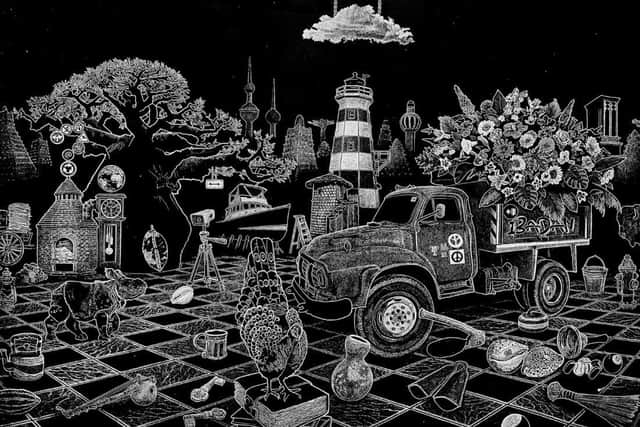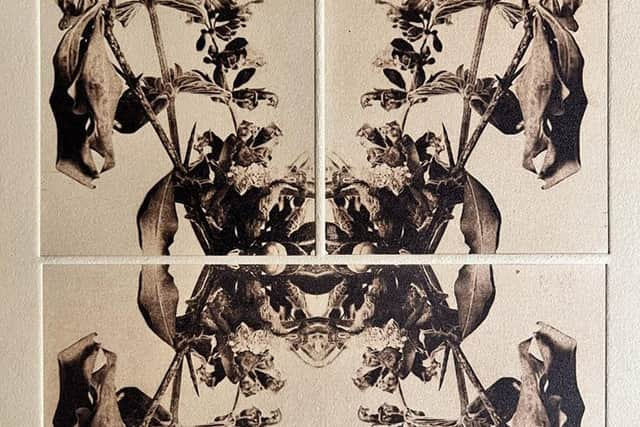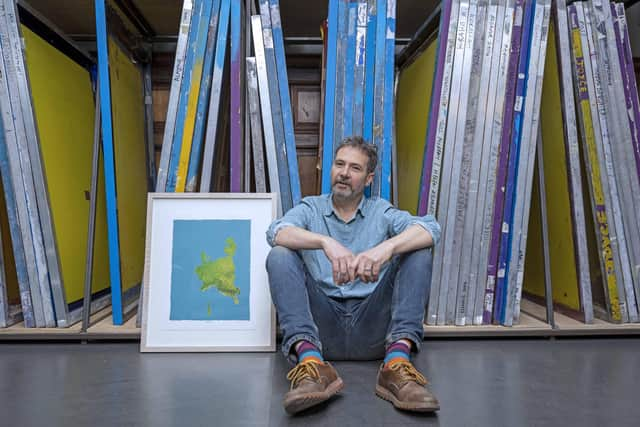Art reviews: RSA Christmas Show | Kinship | Alastair Clark: 30 Years at EP | The Wonderful World of James McBey
The RSA Christmas Show, Royal Scottish Academy, Edinburgh ****
Kinship, Edinburgh Printmakers ****
Alastair Clark: 30 Years at EP, Edinburgh Printmakers ****


The Wonderful World of James McBey, Fine Art Society, Edinburgh ****
Advertisement
Hide AdThe RSA Christmas Show is somewhat reduced this year. There was not enough space available for the usual open exhibition. Instead, entry has been limited to members and there are around 150 works on view by around 50 artists. There are, however, also a few more works visible on the RSA website. Unusually, the exhibition includes work by past academicians. The Academy seems to have become the default legatee for artists’ estates, or at least the art they have left, and so is rapidly accumulating work by past members. Even if it keeps a core collection, there is much that can be sold. Hence the appearance here of work by Jack Knox, Willie Rodger, David Michie and others.
Most of the works, whether by past or present artists, are small as is usual in this winter exhibition. An exception has been made, however, for Contradictions, an impressive linocut by Ade Adesina. Nearly two metres wide, it deploys his familiar imagery blending ancient with modern and African with European. Supported by two or three smaller works by the artist, it makes a grand centrepiece for the show.
David Mach’s satirical prints hanging nearby are not utterly remote in mood. His lithograph, Shepherd’s Delight, for instance, is a pastoral scene, broadly in the form a blue and white plate. There is a picturesque waterfall in the background, but the idyll is disrupted when one man sabotages a rope bridge and another in consequence falls into the waterfall. Mach’s print Basketcase is simply of a supermarket basket, but it is filled, not with food, but with nothing but expletives – a comment on our troubled times, no doubt. Very different in mood are two small paintings by Mary Bourne. Her work is familiar for her exquisite handling of stone, but here she combines ink and gouache on paper to create equally exquisite small paintings of deep blue night skies. The blue she uses is very like the Prussian blue of cyanotypes, a simple form of photography deployed here by Leena Nammari in a series of mysterious blue interiors. Jacki Parry uses, not blue, but brilliant red in what she titles ways of modelling: red plants. They are flowers modelled in cast, hand-made paper and dipped in red. Graham Fagen’s Glitter Rainbow I and II are pretty much what they say they are, beautiful, glittering rainbows made with Indian ink, acrylic and diamond dust.


A painting by Helen Flockhart is also beautiful, but in a quite different way. Only a few inches square, on the face of it it is just a painting of a woman in an orange bathtub, but with sunlight coming through a window, it has a strangely intense atmosphere. Atmosphere has always been a feature of Philip Braham’s work too. Here, in two small paintings in monochrome oil on paper, he has captured something of the distant, delicate mood of early photographs. Delicacy of effect is also the hallmark of Paul Furneaux’s woodcuts, but in Lewis Rain IV he has departed from his usual abstract patterns to create a simplified view of mountains across water worthy of the landscapes of the Japanese masters who are his model. Kate Downie, too, has been learning from the Orient and, even though it is on a small scale, in her ink and watercolour drawing, John’s Flock, Iona, she uses to advantage the vertical form of a Chinese hanging scroll. Her lovely little diptych, Crossing the Tweed, is more reminiscent of Turner, but is none the worse for that.
Gareth Fisher is the newly elected president of the Academy. Ecological concerns are suggested by two of his works here. Glacial Slice is a model in plaster that suggests the telling record of climate change in a slice of Arctic ice. His Fossil Fuel Baroque, in ink and watercolour is a pattern of elegant curves and rectangles that suggests the evil genie of fossil fuel emissions rising into the atmosphere. These concerns seem also to inform the most striking work here, Kenny Hunter’s two piece bronze, Crown and Root. The crown is a baby’s skull and the root the female pelvis through which we all enter the world. The baby’s skull is clearly just too big for the passage it must pass through. With his characteristic combination of eloquence and economy, he suggests how in childbirth the size of the human brain pushes the female body to its limit and so by extension how human ingenuity powered by the size of our brains is pushing nature itself to its limit and beyond.
Like the RSA Christmas Show, Kinship, subtitled “Castle Mills Members Show 2”, at Edinburgh Printmakers is a group show limited to members. It includes work by around 70 members of the Printmakers. In addition to the members’ work, however, there is also a display of work by Alastair Clark including work by other artists printed by him. Clark has been studio director of Edinburgh Printmakers since 2014, but this show marks the 30 years altogether that he has worked there.
Advertisement
Hide AdAs might be expected, the members’ show is pretty diverse. There is, for example, quite a lot of straight landscape. Catherine Outram’s etching The City from the Old North Road, for instance, is a nicely made view across Edinburgh from the south with a shift from cool grey to warm brown where country meets town. Gill Tyson’s Where You Lead is a freely drawn lithograph in blues and greys of the sea with two tiny figures apparently going in for a swim, while Val Leckie’s Clouds Over Mull uses etching very skilfully to similar effect. Anne Forte’s Dawn Beach is a screen print of a misty dawn over a beach empty but for two ghostly umbrellas. There is nature study in Helen Kennedy’s etchings of birds, or Jenny Smiths’s elegant laser engravings of a twig of pine and of a maple leaf, or Kittie Jones’s monotypes of ducks. Laura Gressani combines nature and urban landscape in a lovely etching of blossom against a tall building in black, white and cool grey.


There is figurative work, too. Eiko Yamashita’s etchings of children are quite charming. Robert Powell always stands out in any show, and here his Family Tree is a delight. Altogether, it is an enjoyable miscellany. Alongside it, Clark’s own prints suggest a distinguished career while the quality of his work for others is confirmed by a beautiful and technically very complex print of an old tree by Victoria Crowe.
Advertisement
Hide AdJames McBey was a master printer a century ago in the great age of etching, but a fascinating show at the Fine Art Society includes not only a wide selection of his superb prints, with among them etchings he made of the First World War in the Middle East, but also a number of his drawings and paintings. Many of these are of Morocco and of the US and include a striking portrait of Vessie Owens, a black girl whom he painted in North Carolina. There is also a remarkable panoramic drawing, eight feet wide, of San Fransisco Bay. With a large warship prominently moored in the bay, the drawing is dated 30 December 1941, just three weeks after Pearl Harbor.
The RSA Christmas Show until 22 December; Kinship, Alastair Clark and The Wonderful World James McBey until 23 December.